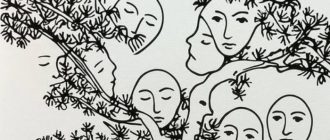“In India, beauty means something completely different” 🪷✨ From light skin obsessions to wedding-day henna and symbolic forehead marks, these traditions might seem unusual—but they carry deep cultural meaning. See the beauty rituals that reveal a whole new world in the article below 👇
Beauty means different things in different cultures. What’s admired in one country can be totally puzzling in another. India, with its rich traditions and deep-rooted customs, has its own unique take on what it means to be beautiful. And some of those ideals can feel quite unfamiliar to women from other parts of the world.
Here are three Indian beauty practices that might surprise you if you’re used to Western standards.
1. Light Skin Is the Ideal
While many women elsewhere spend summer trying to get a golden tan, in India, fair skin is often seen as a mark of beauty and status. A lighter complexion is traditionally associated with youth, elegance, and even higher social standing.

To achieve this look, many Indian women turn to skin-lightening creams and serums. Unfortunately, some of these products contain harsh ingredients like steroids or hydroquinone. Used over time, they can damage the skin and even cause the opposite effect—dark patches or irritation. Despite the risks, the desire for a lighter skin tone remains deeply ingrained in many parts of the country.
2. The Significance of Sindur
You may have noticed a red line or dot on the forehead of Indian women in films or photos—that’s called sindur. But it’s not just a cosmetic choice. It carries deep cultural meaning and is traditionally worn by married women. In fact, during the wedding ceremony, it’s the groom who applies it for the first time.

Sindur is typically made from materials like cinnabar or lead-based powders and is placed along the hair parting and forehead. While some women wear it daily, especially in rural areas, many today apply it only on important occasions like religious festivals or family celebrations.
3. Mehendi: More Than Just Body Art
Mehendi, or henna body art, is one of India’s most cherished traditions. Though it originally came from ancient Egypt, Indian culture embraced and transformed it into something uniquely its own.

Henna designs are especially prominent during weddings, where the bride’s hands and arms are beautifully adorned with intricate patterns. These decorations aren’t just for show—they symbolize love, joy, and a lasting marriage. There’s even a belief that the deeper the color of the henna on the bride’s skin, the more her future husband will adore her.
What may seem unusual to outsiders is often full of meaning and history for those who grow up with it. Beauty, after all, is not one-size-fits-all—it’s a reflection of culture, tradition, and identity.
Which of these beauty traditions surprised you the most? Let us know your thoughts in the comments!







